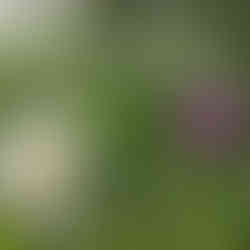St Georges Flower Bank
- Debi Holland
- Mar 9, 2020
- 3 min read

Sometimes the most beautiful wildlife-friendly spots can be found in the most unexpected of places.
On the roadside verges of the A369, a main artery in to Bristol, and a few 100 yards from one of the busiest motorways in the UK, the M5, lies an oasis. An area teaming with wildflowers and subsequently buzzing with pollinators, boldly grows in plain view but seems virtually a secret... when in fact this strip of land has been a nature reserve since 1990!

Whilst queuing at traffic lights on a commute to work I noticed the grassy banks next to me were not the traditional municipal mowed, soulless banks but they were alive. Long grasses swayed in the breeze alongside field scabious, clover, daises, achillea, hogweed, cow parsley AND wild orchids! This area was like gold dust.

After work I stopped by the verges to get a closer look and discovered it was in fact a local nature reserve called St Georges Flower Bank, run by volunteers, proudly led by Chairman Bob Buck.

I bumped into Bob when I had stopped to take photos of the plants, by chance he was cycling through the reserve and paused to chat. It was an ideal opportunity to find out more about this incredible natural area.
The verges were borne out of excavation waste from building the main road into Bristol, this provided the perfect growing conditions for wildflowers. Poor soil quality allowed the flowers to thrive and the results are glorious!
I find the most incredible revelation is that no flower seed has been sown, all of the flora on the verges are naturally occurring. This is a true testament to allowing nature to develop its own wildflower meadow as the list of plants which can be found here are diverse.

The team work to ensure the soil remains impoverished by mowing the grass at various times of the year, removing brambles and other invasive, fast growing plants and also carefully cutting back hedges, encouraging nesting and providing natural habitats, whilst wood piles entice fungi and wildlife.
If you are inspired by the work at the St Georges Flower Bank then there are plenty of ways you can apply that inspiration in your own garden and encourage wildlife to set up home. See this beautiful hand drawn poster which was the combined effort of Lucy Byrne, Annie Morris, Sarah Pitt and Hannah Price who did the illustrations. The ladies are all part of the Carbon Capture Group Initiative.

The nature reserve has recorded a staggering 475 different plant species and 477 invertebrate species on site. For a small area, this is an outstanding achievement and certainly shows how the plants and wildlife move in when the conditions are right.
The reserve has hosted a huge variety of bees, butterflies and beetles, hedgehogs, foxes and badgers, birds, mosses, trees and plants.
Pollinators include many species of mining bee, Andrena cineraria, nitida, dorsata, fulva, haemorrhoa, helvola, minutula, scotica, semilaevis, subopaca, honey bees Apis mellifera, hoverflies Baccha elongata, Cheilosia illustrata, lasiopa, pagana, and Chrysotoxum bicinctum, nettle pollen bees Brachypterus urticae, and many bumble bees from small garden bees to common carder and buff-tailed; Brachypterus urticae, Bombus hypnorum, lapidarius, pascuorum, pratorum, terrestris, Brachypterus urticae to name but a few!
Wonderful wild orchids litter the bank, Dactylorhiza fuchsii Common Spotted orchid, Dactylorhiza praetermissa Southern Marsh orchid, Dactylorhiza x grandis hybrid orchid and Ophrys apifera the bee orchid have all been found by the volunteers.
The list is enormous.

Check out all the wonderful work the St Georges Flower Bank team do.
See location map and visit next time you are passing.

All photos © Debi Holland 2020









